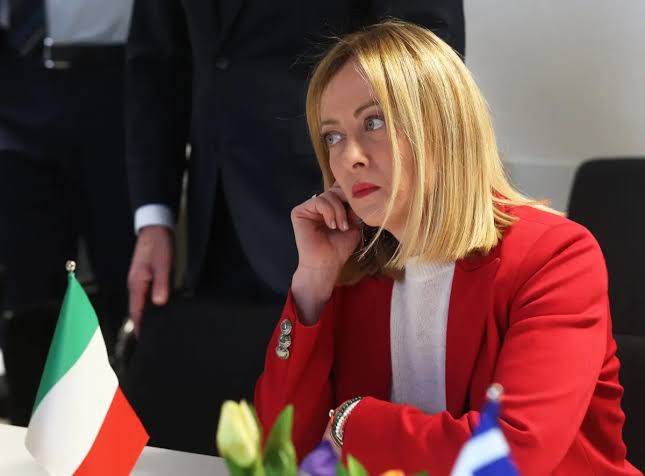Italy’s Prime Minister Giorgia Meloni is scheduled to meet with U.S. President Donald Trump in Washington on April 17 to address the tariffs imposed on European Union imports, her office announced on Tuesday.
The 27-member bloc is currently facing a 25% tariff on steel, aluminum, and automobiles, along with a broader 20% tariff on nearly all other goods starting Wednesday, as part of Trump’s strategy to target countries he claims have high barriers to U.S. imports.
In a speech to Italian business leaders, Meloni expressed her support for a proposal from the European Commission aimed at establishing a “zero-for-zero” tariff agreement to prevent a trade conflict with the United States.
“This negotiation requires our collective commitment at all levels, and I am fully engaged in this effort as I prepare for my visit to Washington on April 17,” Meloni stated in remarks shared by her team.
As a nationalist who holds Trump in high regard, Meloni faces the challenge of balancing her ideological alignment with Washington against Italy’s strategic relationships within the European Union, according to analysts.
Additionally, she is under pressure to advocate for Italy’s export-driven economy, which recorded a trade surplus of 40 billion euros ($43.75 billion) with the United States last year, making it the third-largest in the EU after Germany and Ireland.
Italian exports to the U.S. account for 10% of the country’s total exports.
See more: Thousands Protest the Cancellation of the Romanian Election, Demanding a Re-vote.
Meloni expressed her belief that the tariffs imposed by the Trump administration are a misguided choice. She emphasized that the economies of Western countries are deeply interconnected, warning that such stringent protectionist measures will adversely affect Europe as much as they will the United States.
Regarding EU funding, Meloni indicated that her administration would engage with the European Union to explore alternative methods for utilizing existing EU funds to mitigate the anticipated negative effects of the tariffs.
“We are dedicated to leveraging all available resources, particularly those that do not impact public finances,” she stated.
Currently, there are no plans for additional borrowing, and she mentioned that approximately 14 billion euros could be sourced from a revision of Italy’s EU-supported post-COVID recovery plan, with another 11 billion expected from EU regional development funds. Additionally, around 7 billion euros are anticipated to be allocated from EU funds designated for climate change initiatives.
The government is also preparing to revise its economic growth projections for this year and the next, in light of the increasing uncertainty stemming from the U.S. tariffs, according to two sources familiar with the situation who spoke to Reuters on Tuesday.
Italy’s multi-year budget framework, set to be revealed on Wednesday, is expected to predict a 0.6% growth in gross domestic product for the euro zone’s third-largest economy this year, a decrease from the 1.2% target established last September. For the following year, GDP growth is projected at 0.8%, down from the earlier target of 1.1%.




